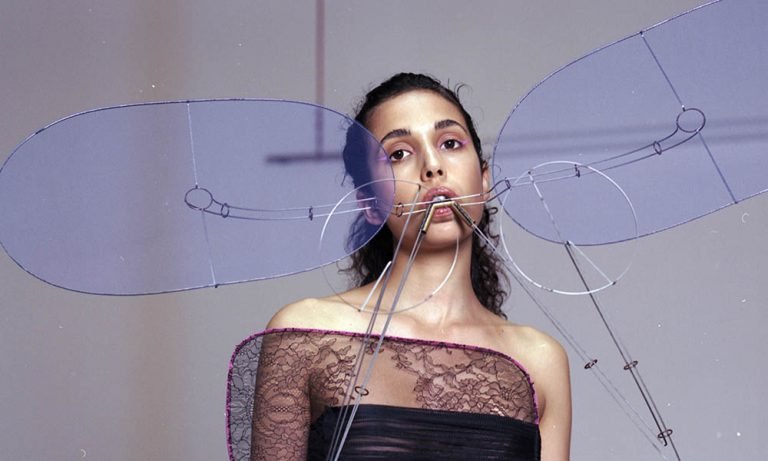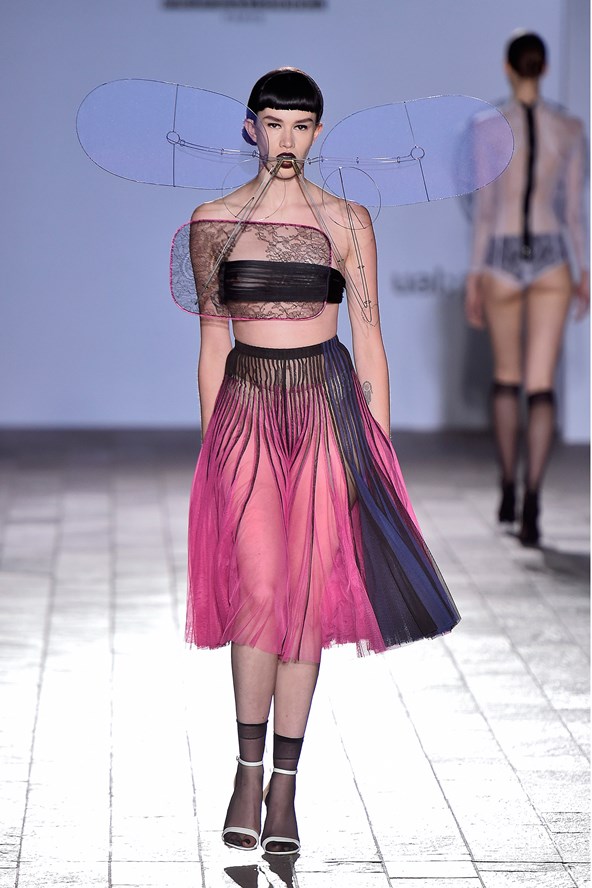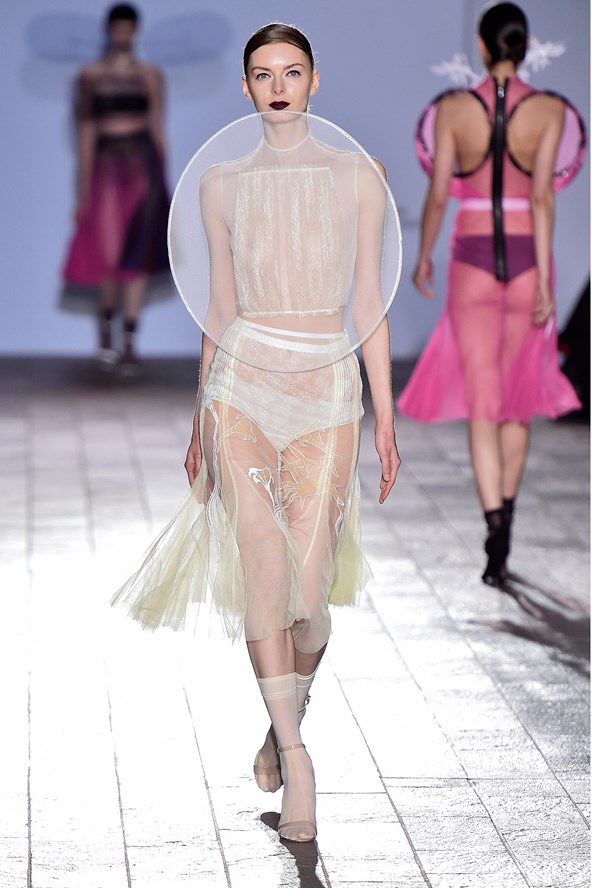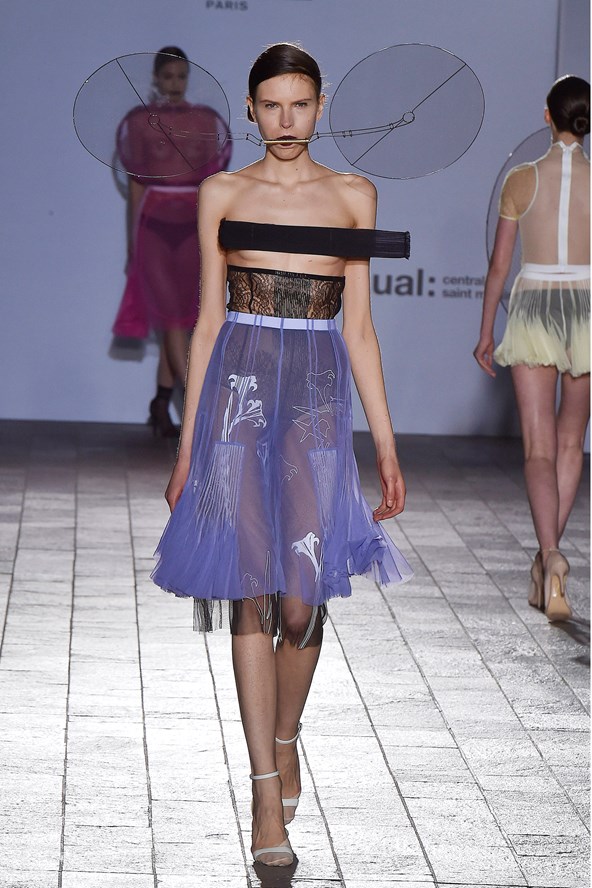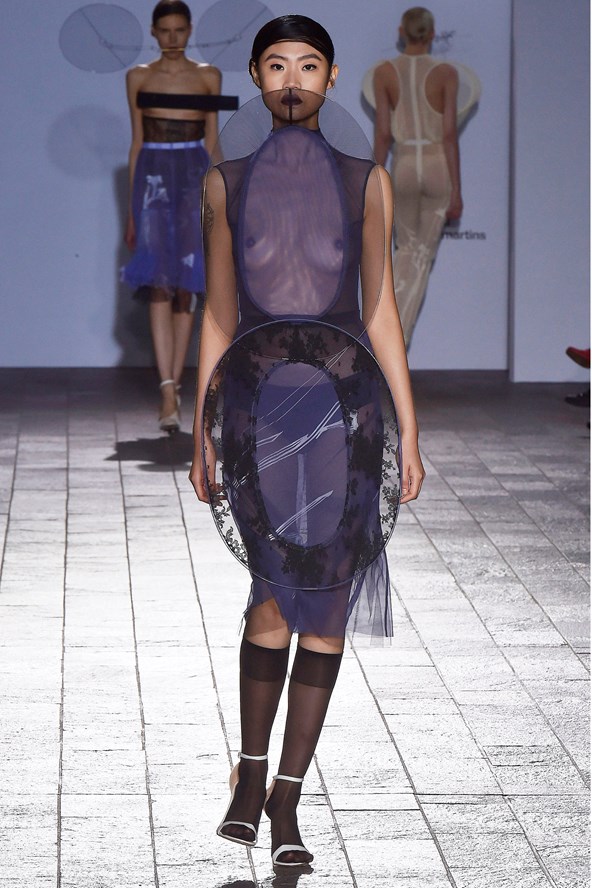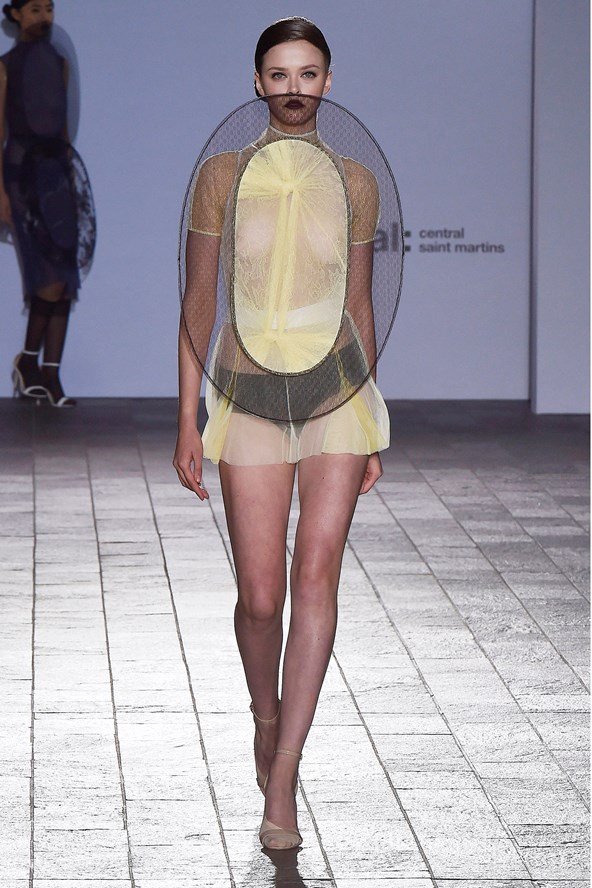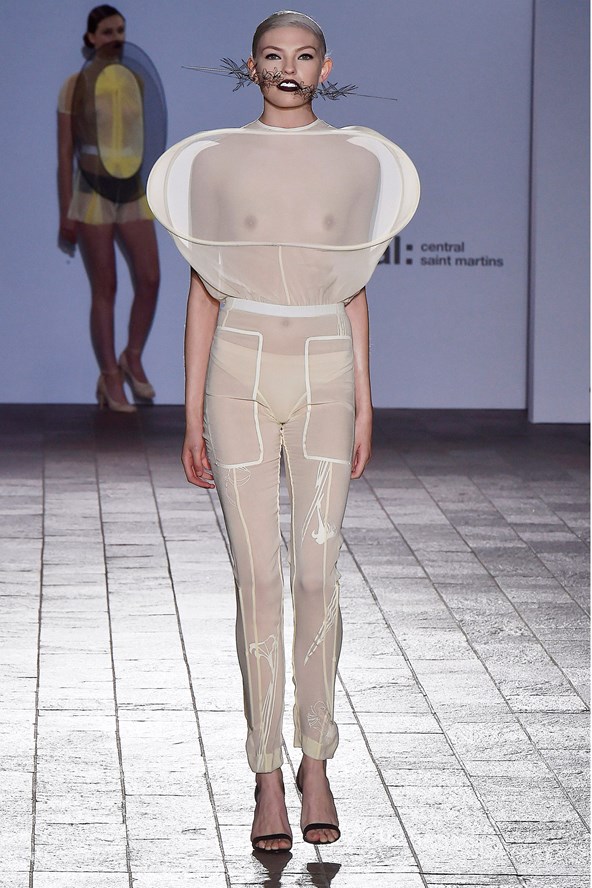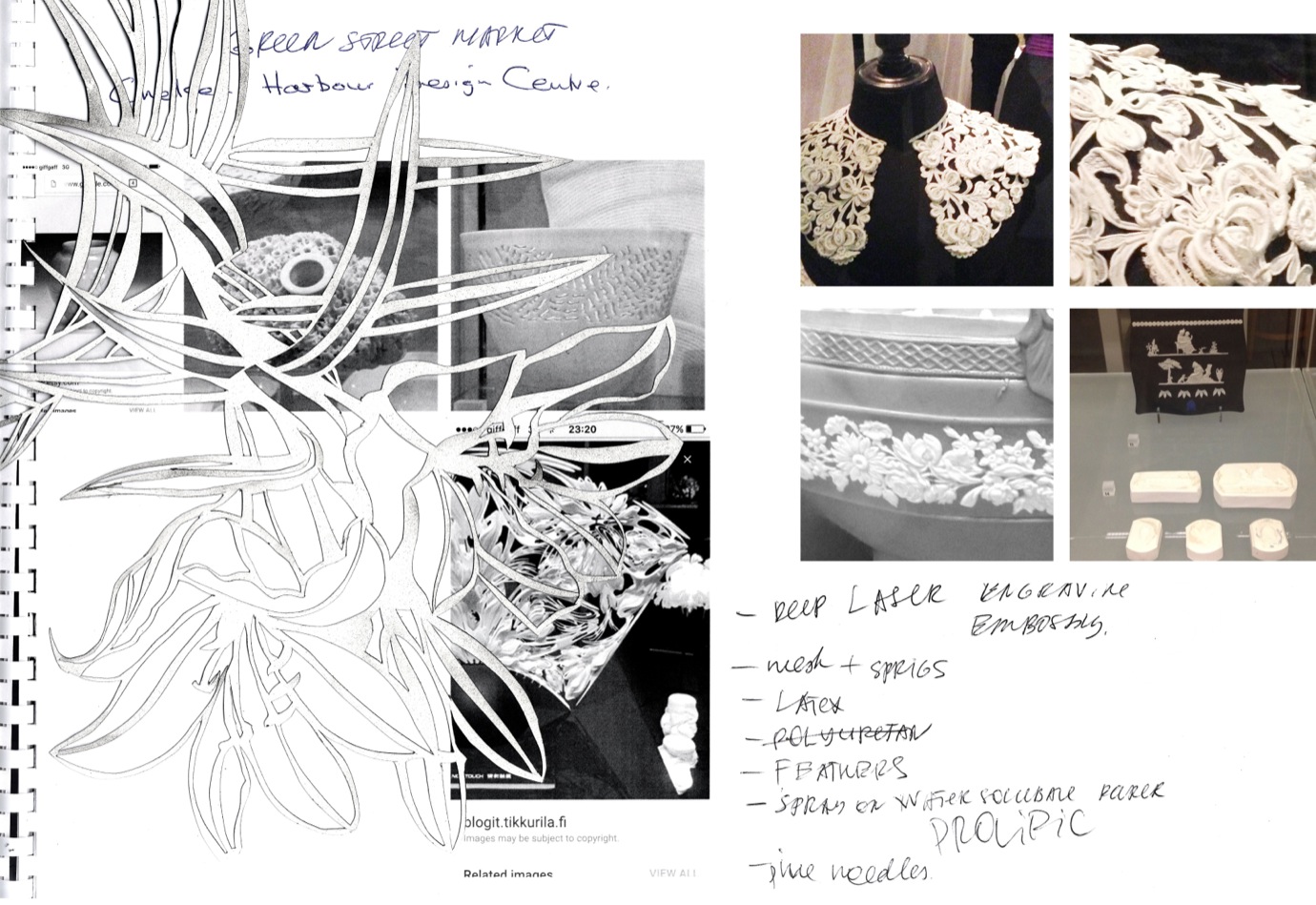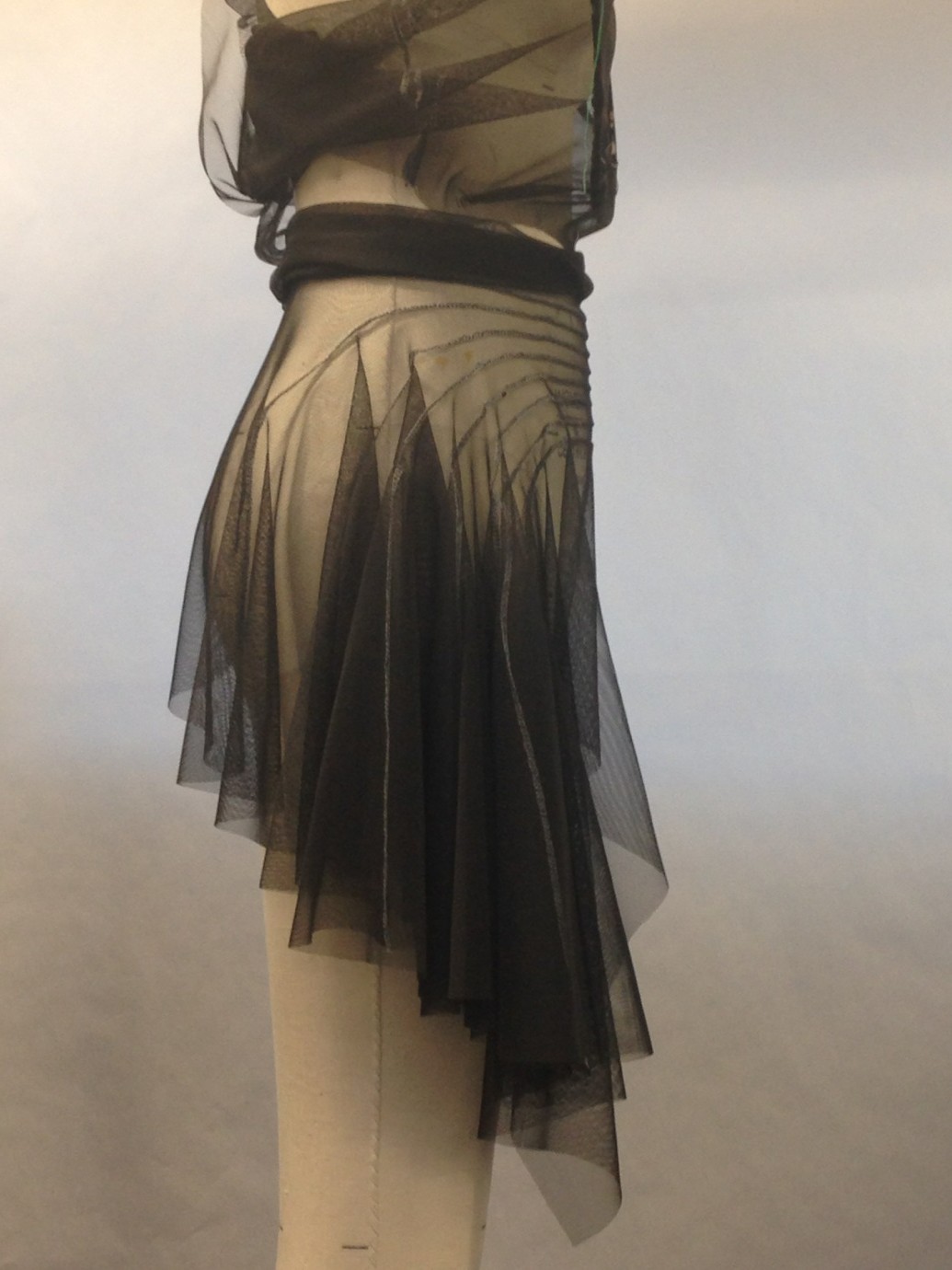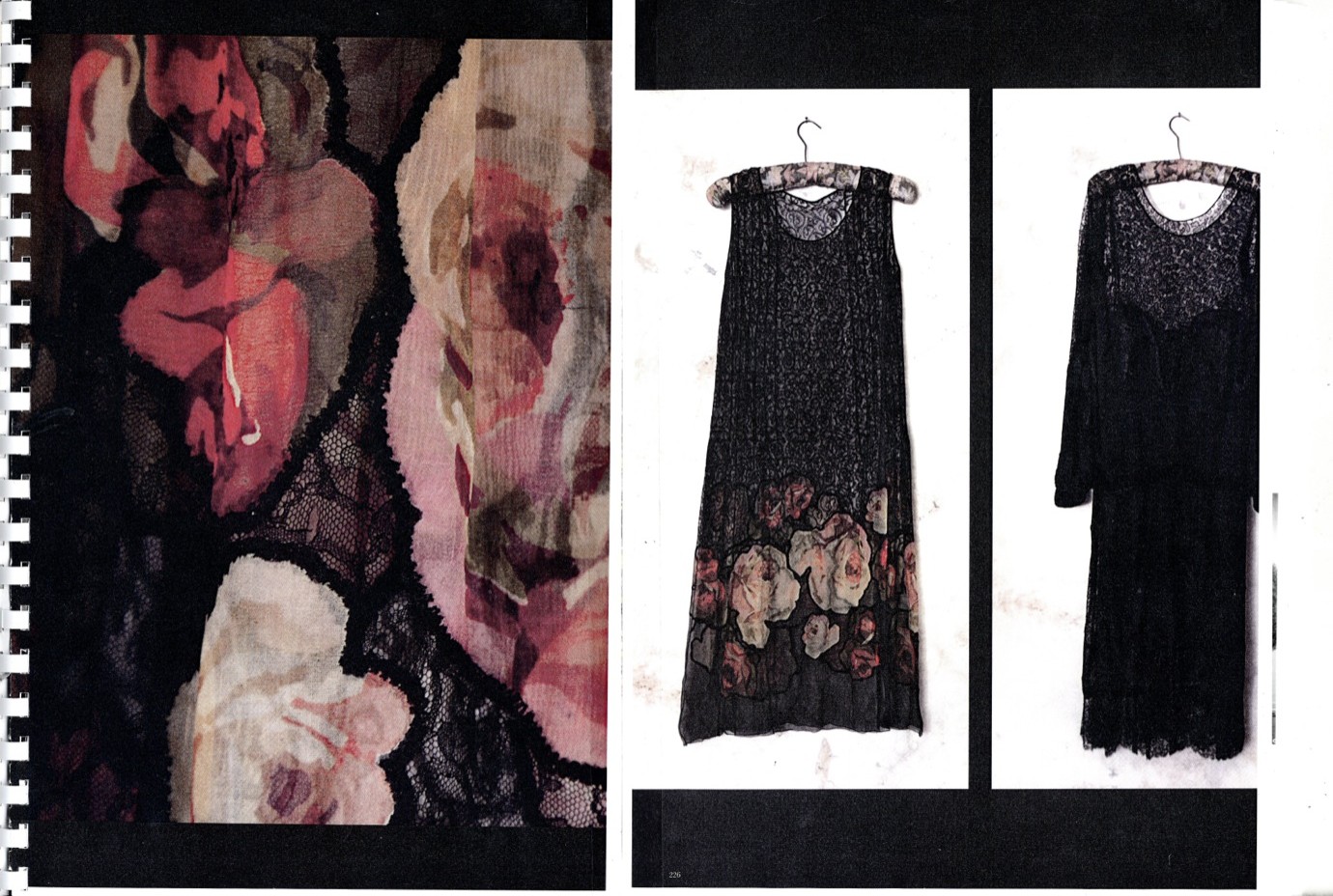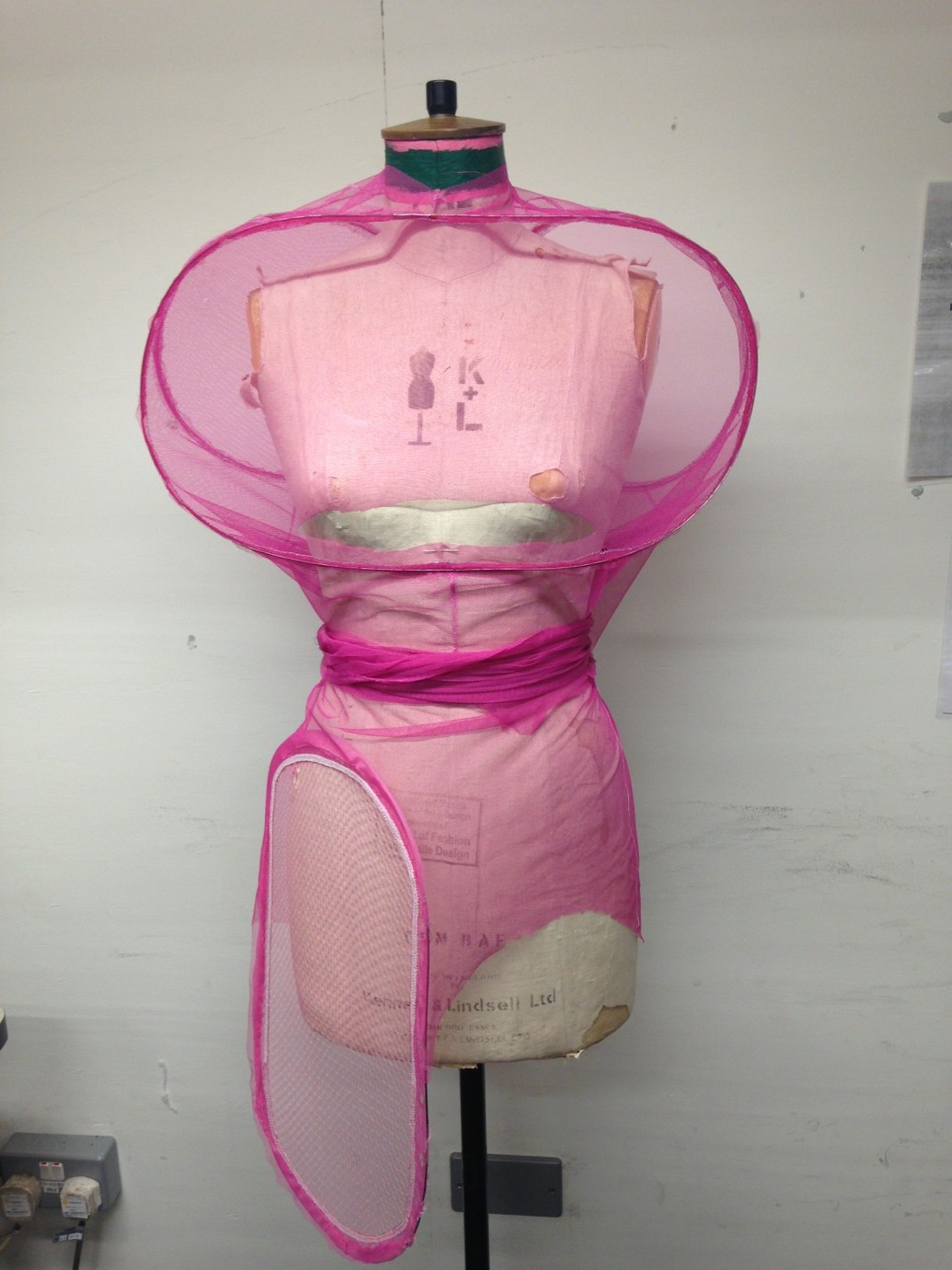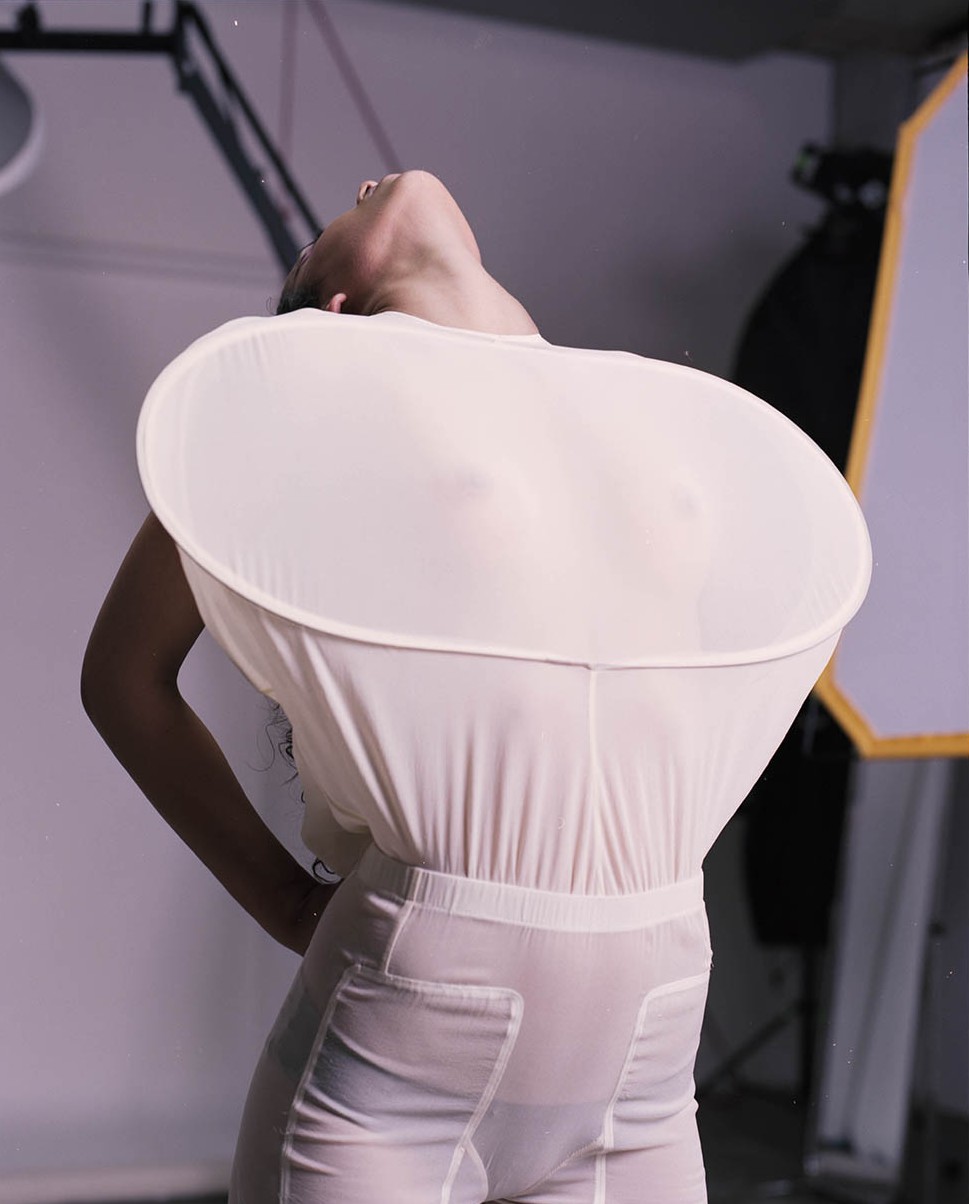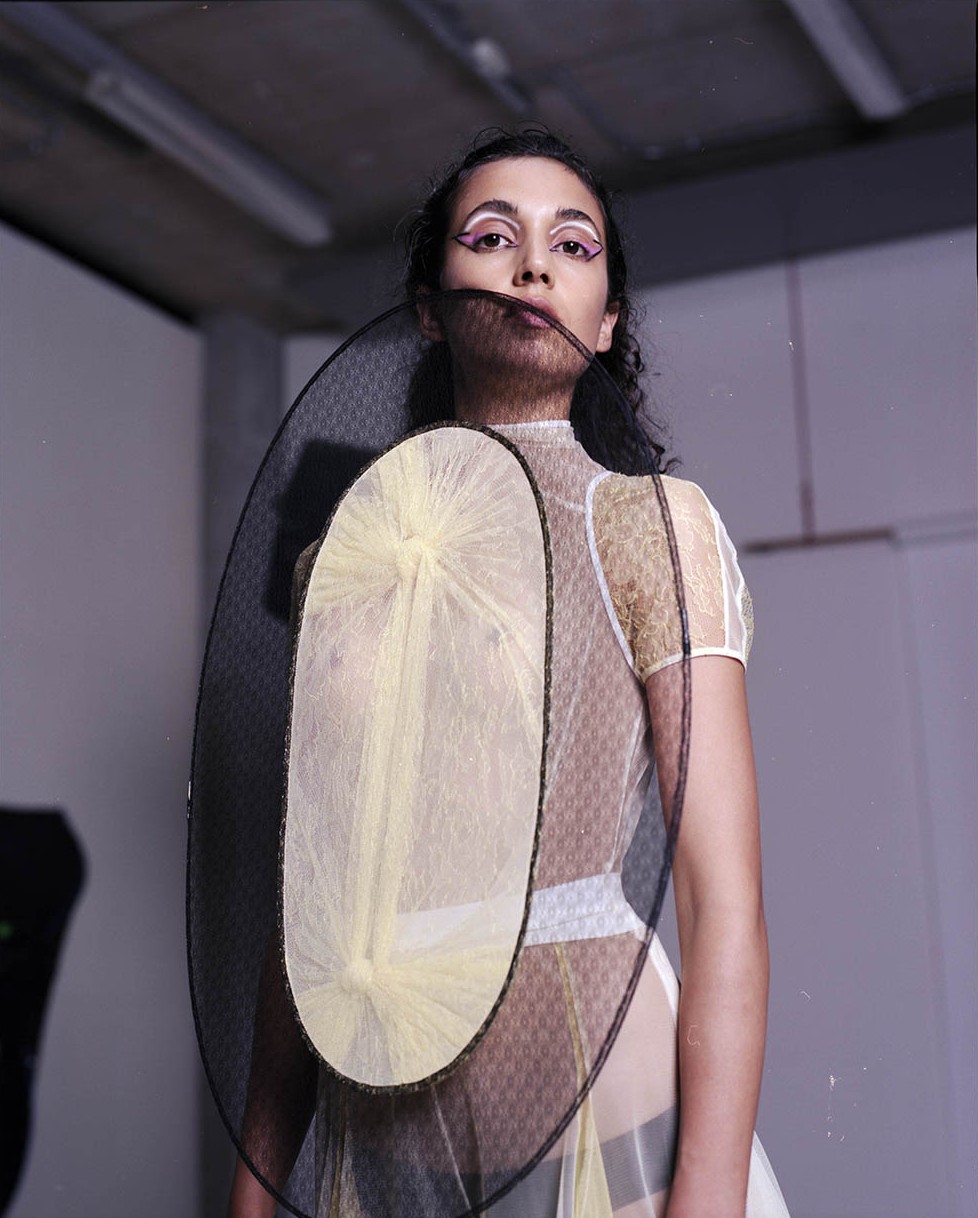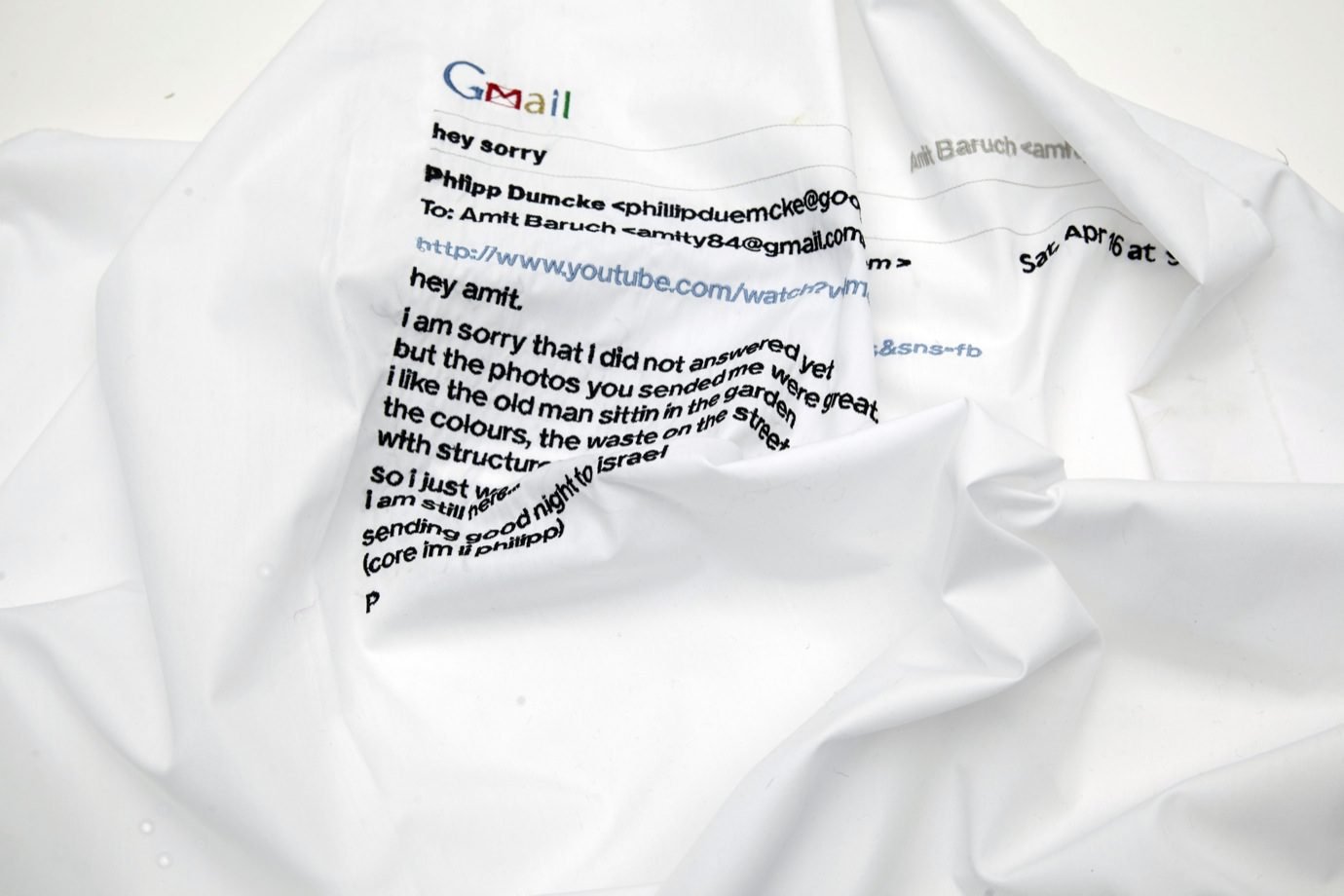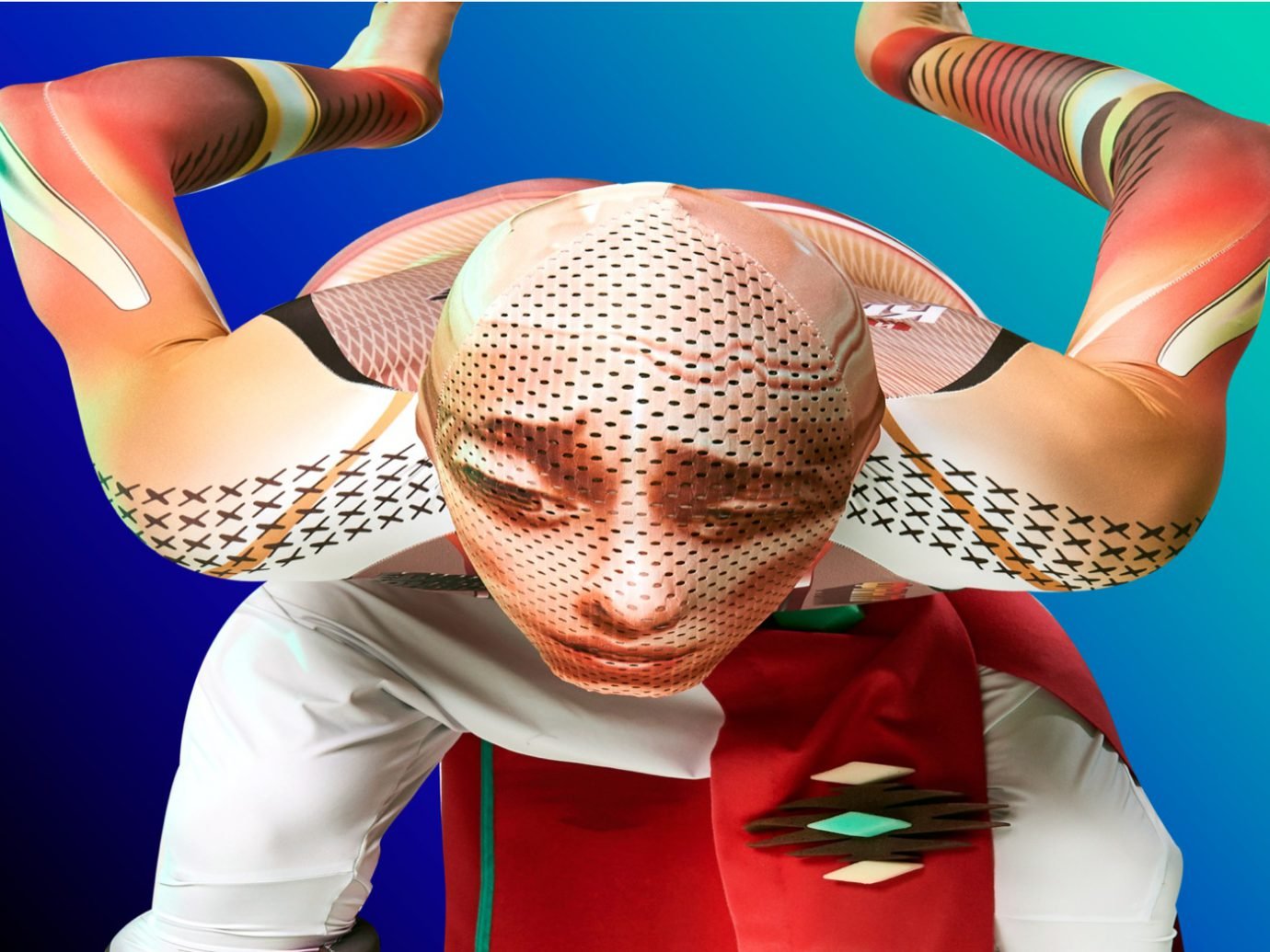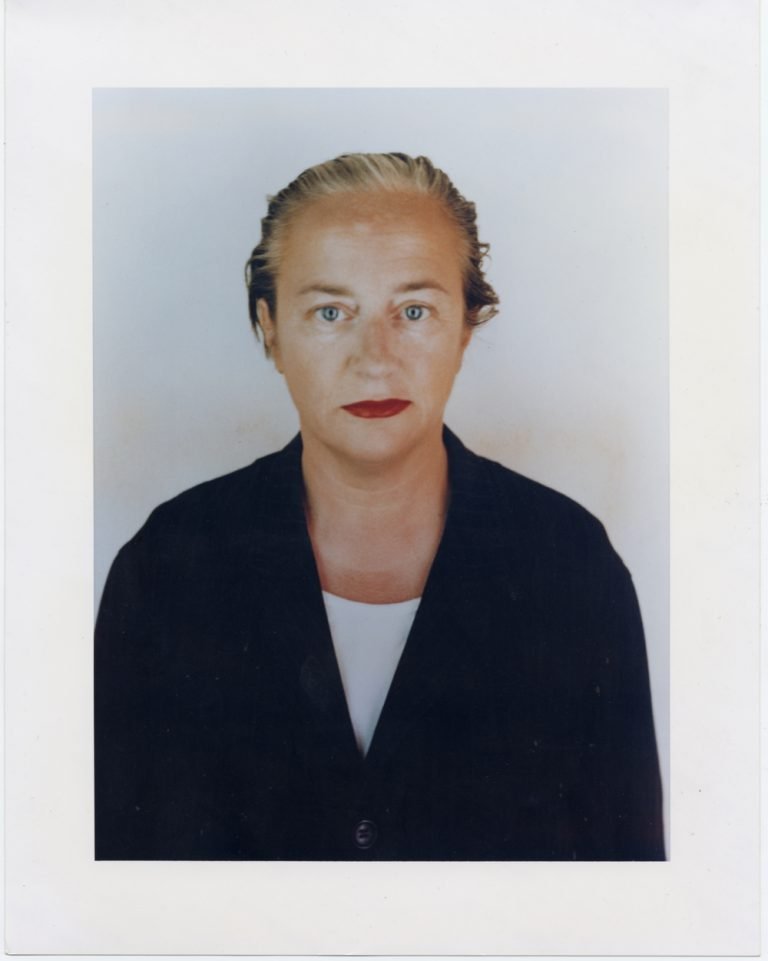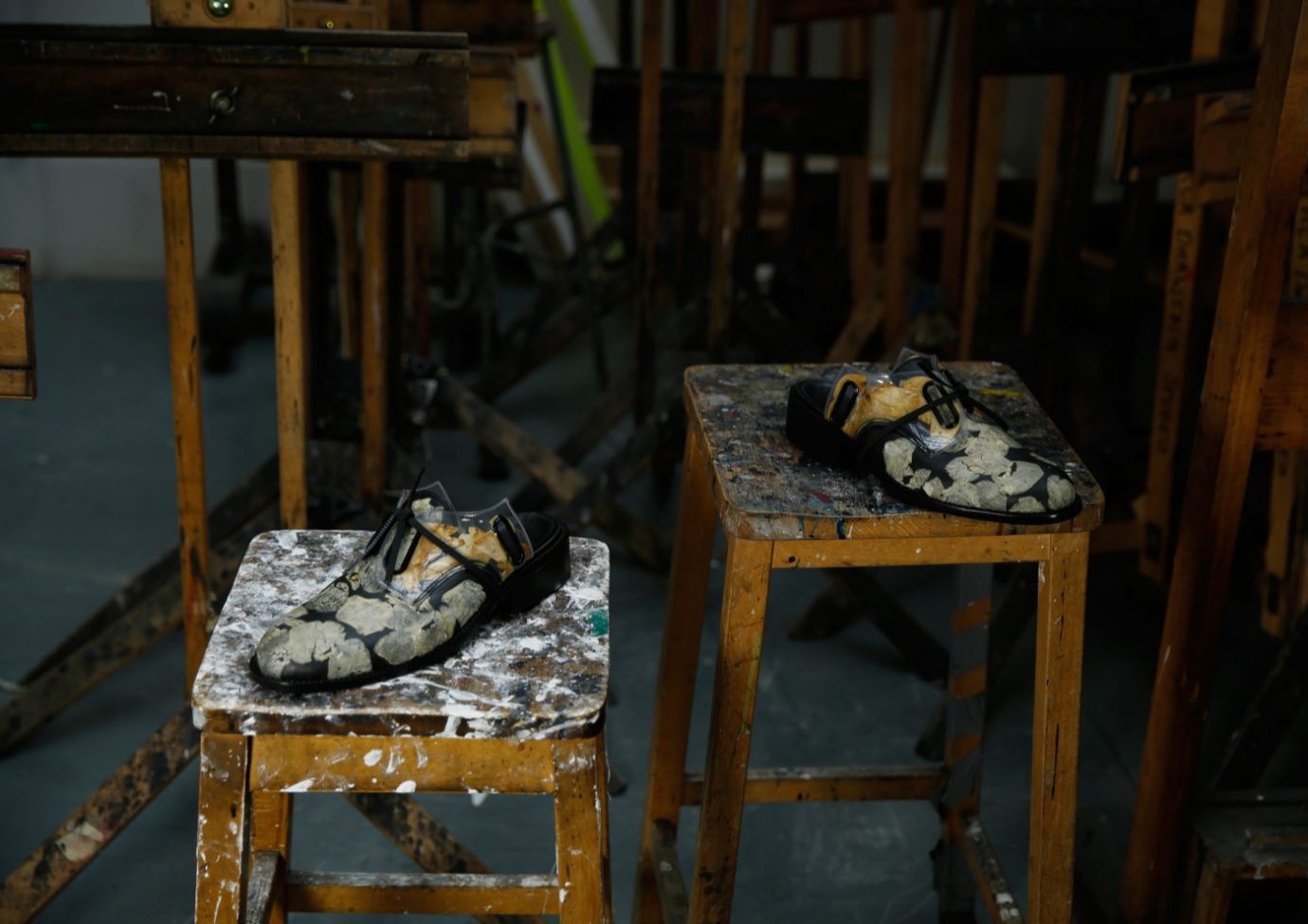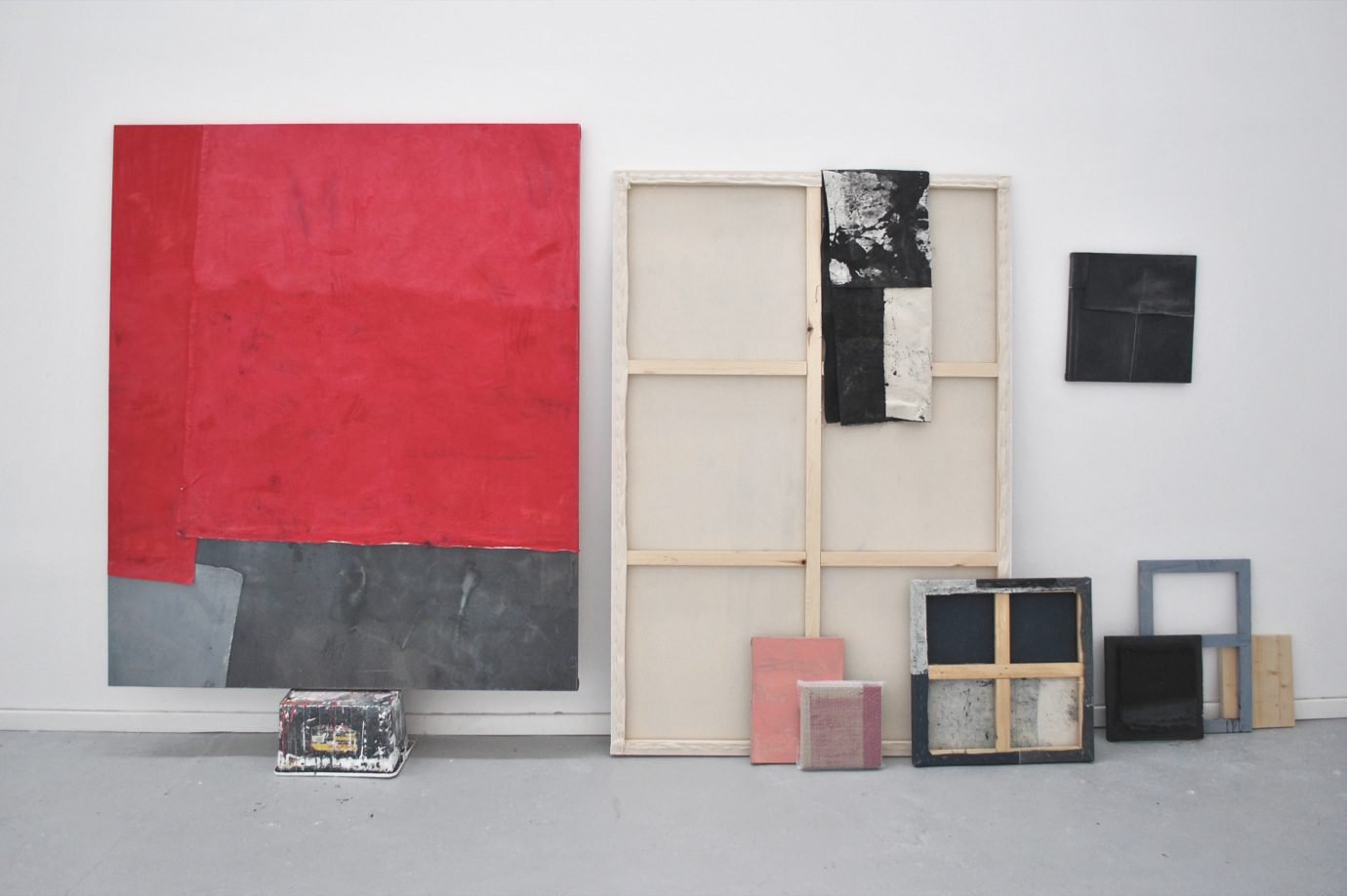When working with abstract concepts, where do you start your research and gather imagery? How do you make an idea more tangible?
Usually I don’t collect too many images. My research is normally very broad — I select key images to represent the idea and then I move straight to the development stage. I look a lot at materials and their visual effects. I find it hard to surprise an audience with cut or embellishments; I’m not a decorative designer. I put a lot of thought into the project elements and their correspondence with the concept. As part of my research, I visited the V&A archive a few times, where I had the chance to examine six original looks from the 1920s.
Do you get inspired by every brief? If you don’t, how do you approach that “block”? How do you make projects work for you?
When given a brief, I would try to find an element that interests me the most, something that I could relate to. It’s funny, as all the 50 Womenswear students work on the same brief, and sometimes the starting point could be similar, but the final result is never the same. Each of us transforms the project according to personal style and vision. For the tailoring project we were asked to look at cars. I’m not a great fan of automobiles, I don’t drive. Despite the fact that I had no major interest in the theme, I focused on the aerodynamic shape of the object, and tried to interpret a car’s panel seams into garment finishings.
Where do you start your development process? With samples, draping, drawings or collages?
My ideas don’t come with a pencil — I find it hard to draw from my head. Through the years of study at CSM, I developed a way of designing that suits me. I would normally start by manipulating real materials on the dummy, and taking a lot of pictures of the shapes and silhouettes. It helps to immediately see how materials work together; the proportions, the color combinations. I simultaneously develop the fabric samples and finishings; then I move to the analysis stage, and then I’d carry on iterations of the elements.

